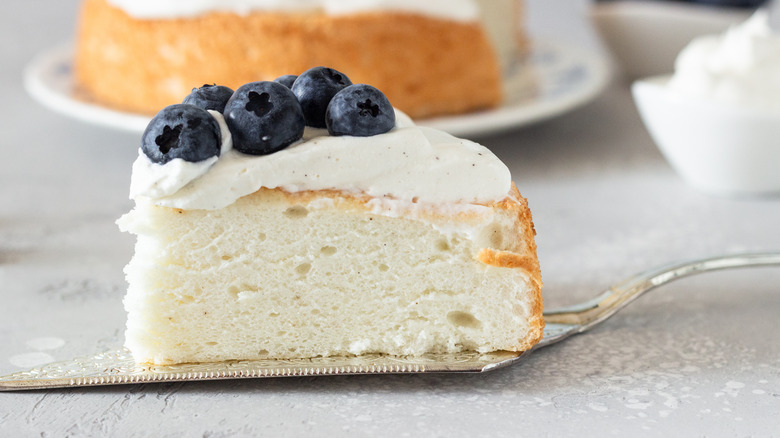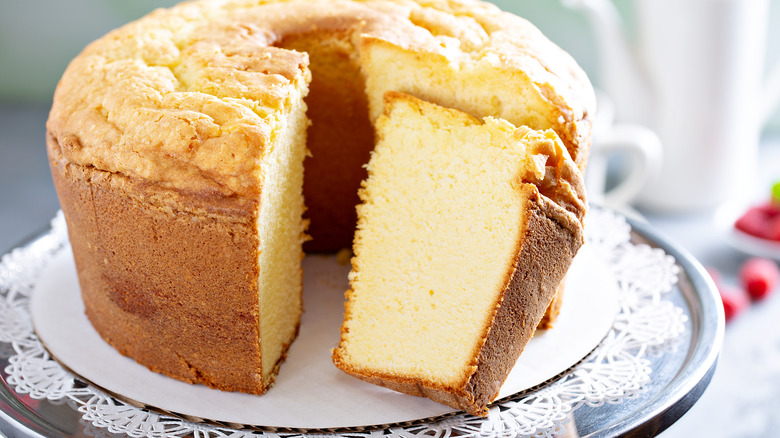How Delicate Angel Food Cake Became A Dessert Classic
Light, fluffy angel food cake is a combination of basic pantry staples: sugar, salt, flour, egg whites, cream of tartar, and sometimes a little vanilla or orange extract. Its finishing touches are similarly understated, drizzled with warm chocolate sauce, dolloped with custard, or topped with fresh berries and whipped cream. Alas, angel food cake's assembly technique is infamously less simple. The batter must be beaten into stiff peaks, but not too stiff, or the signature airy cake will become tough. Indeed, meringue-based cakes, sponges, and chiffons are tough to get right — but intrepid foodies have nonetheless been trying their hand at it for centuries.
Angel food cake is thought to have originated in the southern Pennsylvania Dutch kitchens of the early 1800s, largely due to the prominence of cake molds in the region at the time. The earliest recorded ancestor of the modern angel food cake is a sponge cake recipe published in Lettice Bryan's 1839 cookbook "The Kentucky Housewife," which implicates the treat a little further South. Still, sponge cakes are made with whole eggs and angel food cake uses egg whites only. The 1800s also saw the invention and quick rise to fame of hand-cranked rotary egg beaters with two intertwined, counter-rotating whisks, which made the laborious egg-whipping process way easier. The invention was officially patented in 1870.
Rise to popularity, aka an angel gets its wings
Before this ease-facilitating invention, some historians think that the angel food cake would have been a treat exclusively prepared by enslaved people in the Southern U.S. due to the grueling manual egg-beating process — which would also align with the geographic placement suggested by the recipe's appearance in the "Kentucky Housewife" cookbook.
Once the rotary beaters hit in 1870, the era of angel food cake had largely arrived. A recipe for "snow drift cake" appeared in print in the 1871 "Mrs. Porter's New Southern Cookery Book, and Companion for Frugal and Economical" bearing identical ingredients to angel food cake: sifted flour, sugar, butter, "sweet milk," cream of tartar, baking soda, and egg whites "beaten to a stiff froth." Another near-identical recipe for "silver cake" appeared in the 1881 cookbook "What Mrs. Fisher Knows About Old Southern Cooking," written by Abby Fisher, a former enslaved person in Mobile, Alabama.
The name shift to "angel food cake" seems to have occurred during the late 1870s. Lucy Webb Hayes, first lady and wife of President Rutherford B. Hayes, cited angel food cake as her favorite dessert in 1883. A recipe for angel food cake even ran in The New York Times in 1880, and appeared again in Fannie Merritt Farmer's iconic 1896 cookbook. (The Fannie Farmer version is a whopping six pages long, all mostly about getting the technique right.) The tricky dessert remains an enduring old-fashioned classic.

